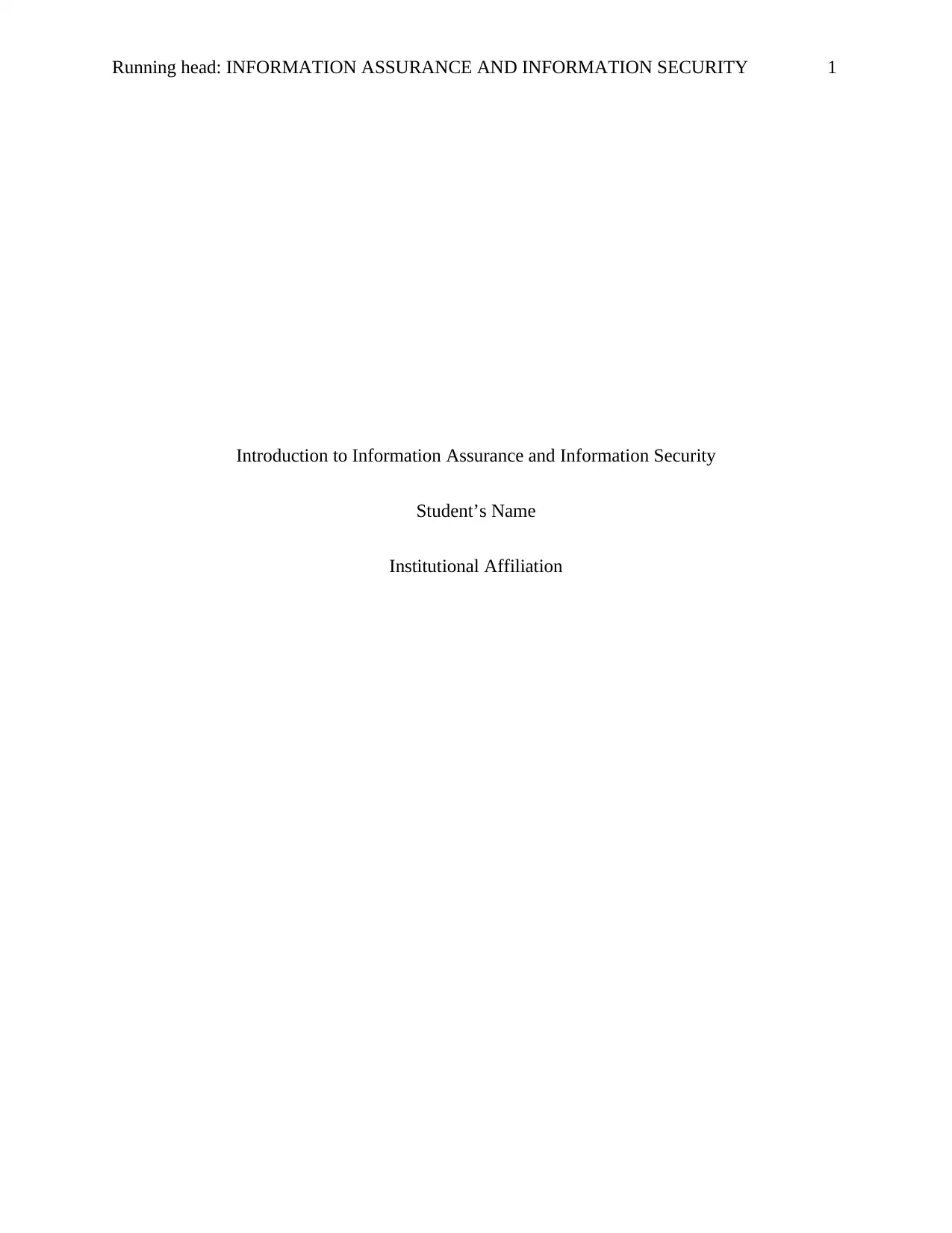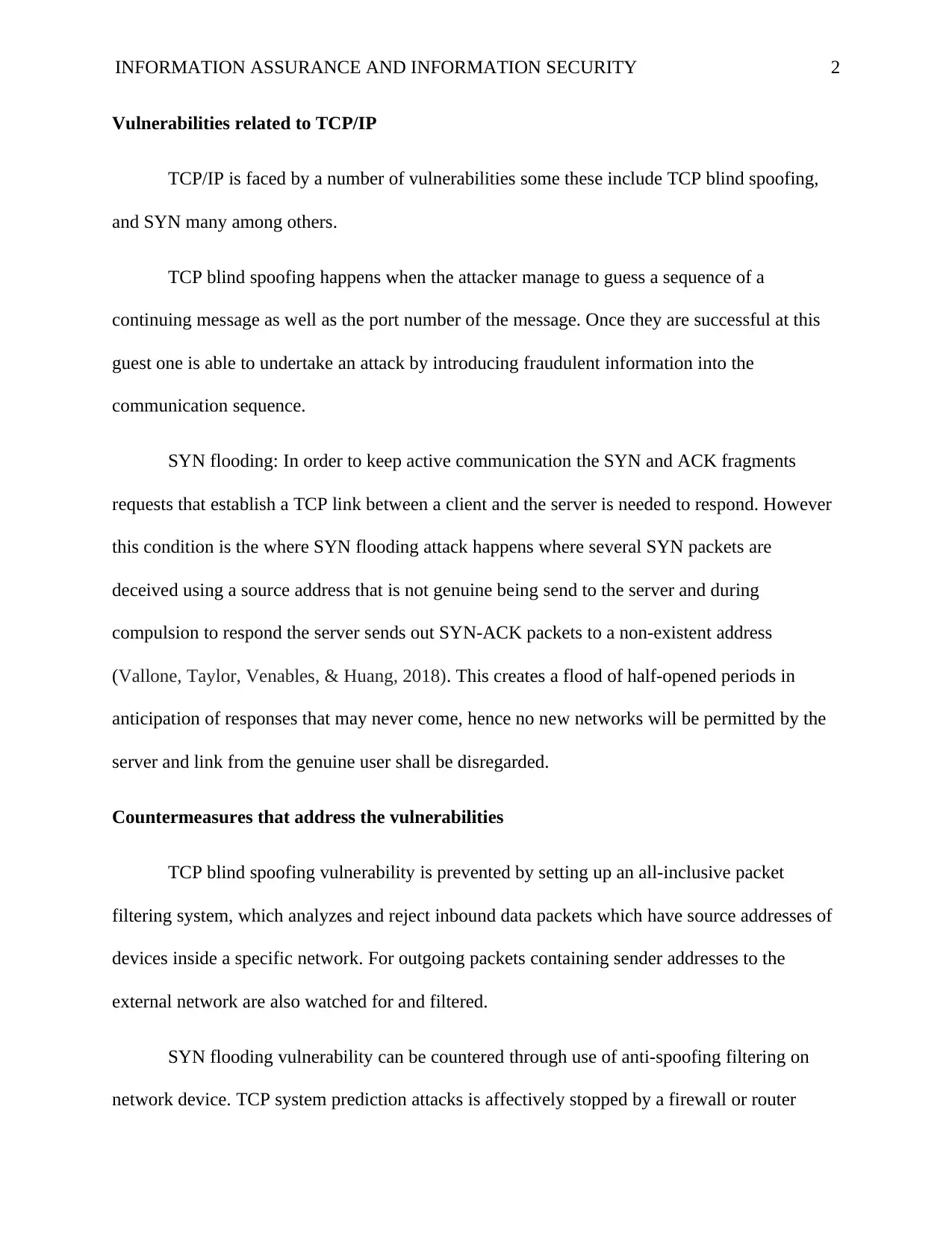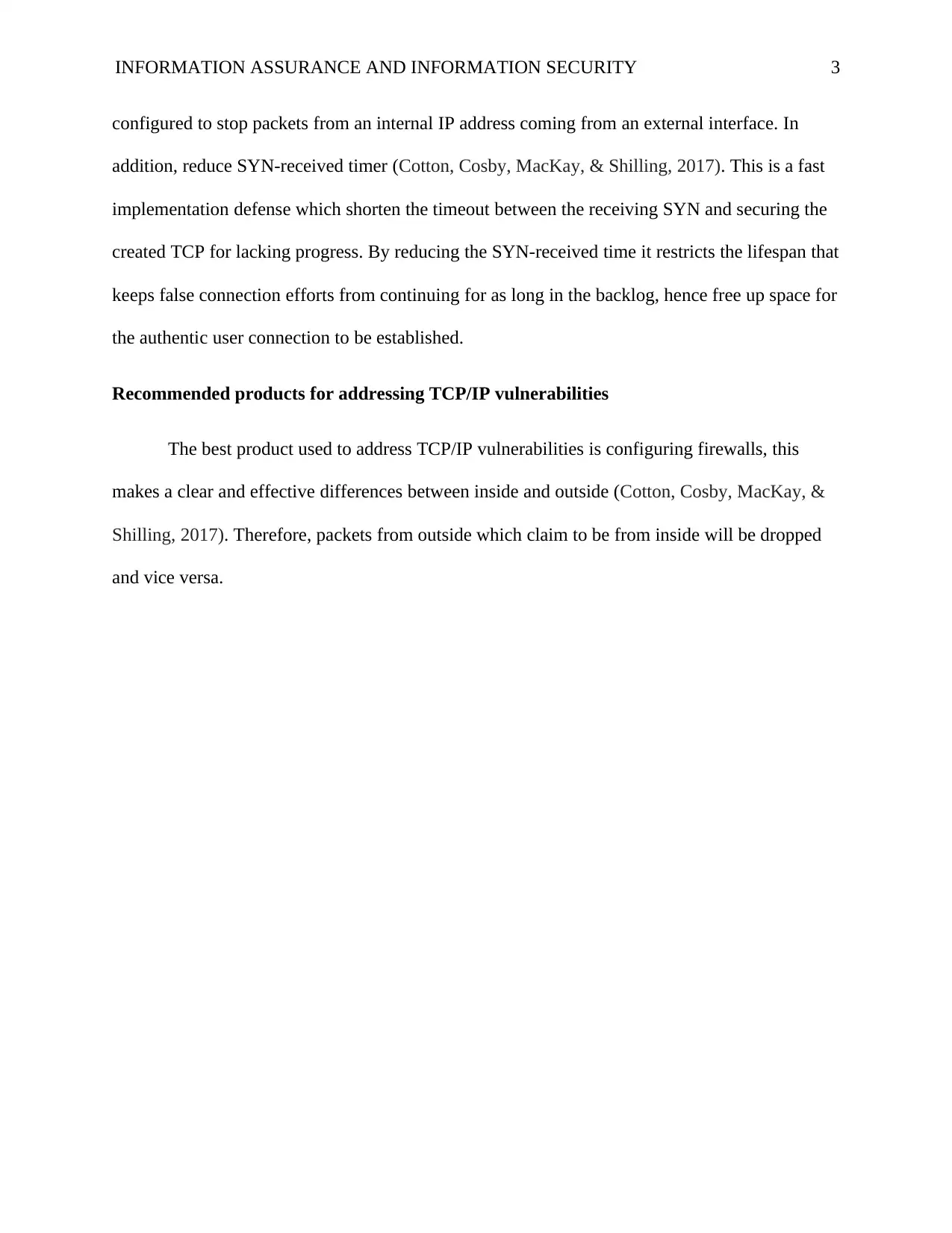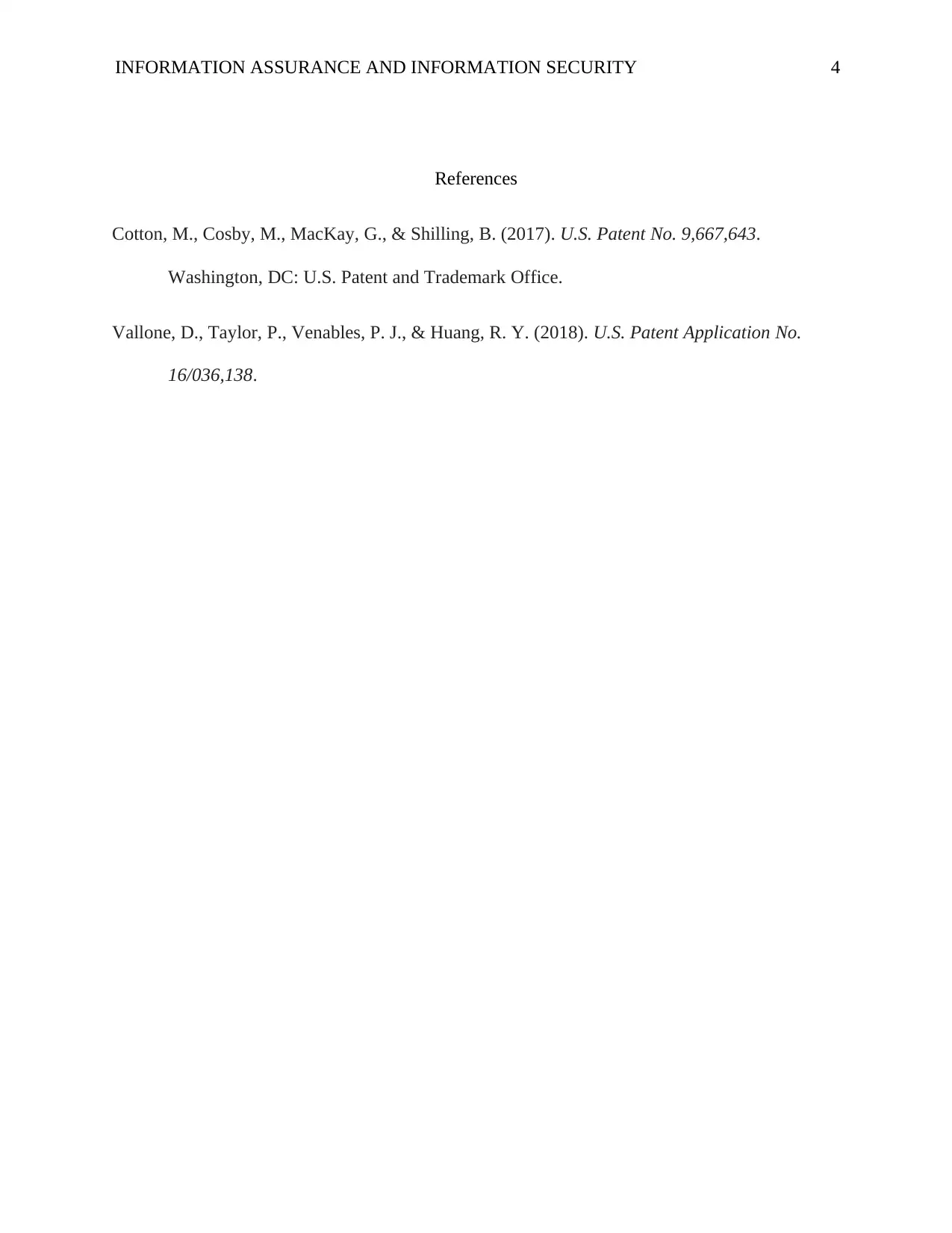TCP/IP Vulnerabilities, Countermeasures, and Product Recommendations
VerifiedAdded on 2022/10/11
|4
|529
|16
Report
AI Summary
This report delves into the vulnerabilities inherent in TCP/IP, focusing on TCP blind spoofing and SYN flooding, detailing their mechanisms and potential impacts. The report provides an overview of how these attacks work, and the implications of successful exploitation. The report then outlines several countermeasures to mitigate these vulnerabilities, including the implementation of packet filtering systems, anti-spoofing filters, and the adjustment of SYN-received timers. It also recommends the use of firewalls as a crucial component in securing networks, highlighting their effectiveness in differentiating between internal and external packets. Finally, the report references supporting literature to validate the information provided.
1 out of 4






![[object Object]](/_next/static/media/star-bottom.7253800d.svg)